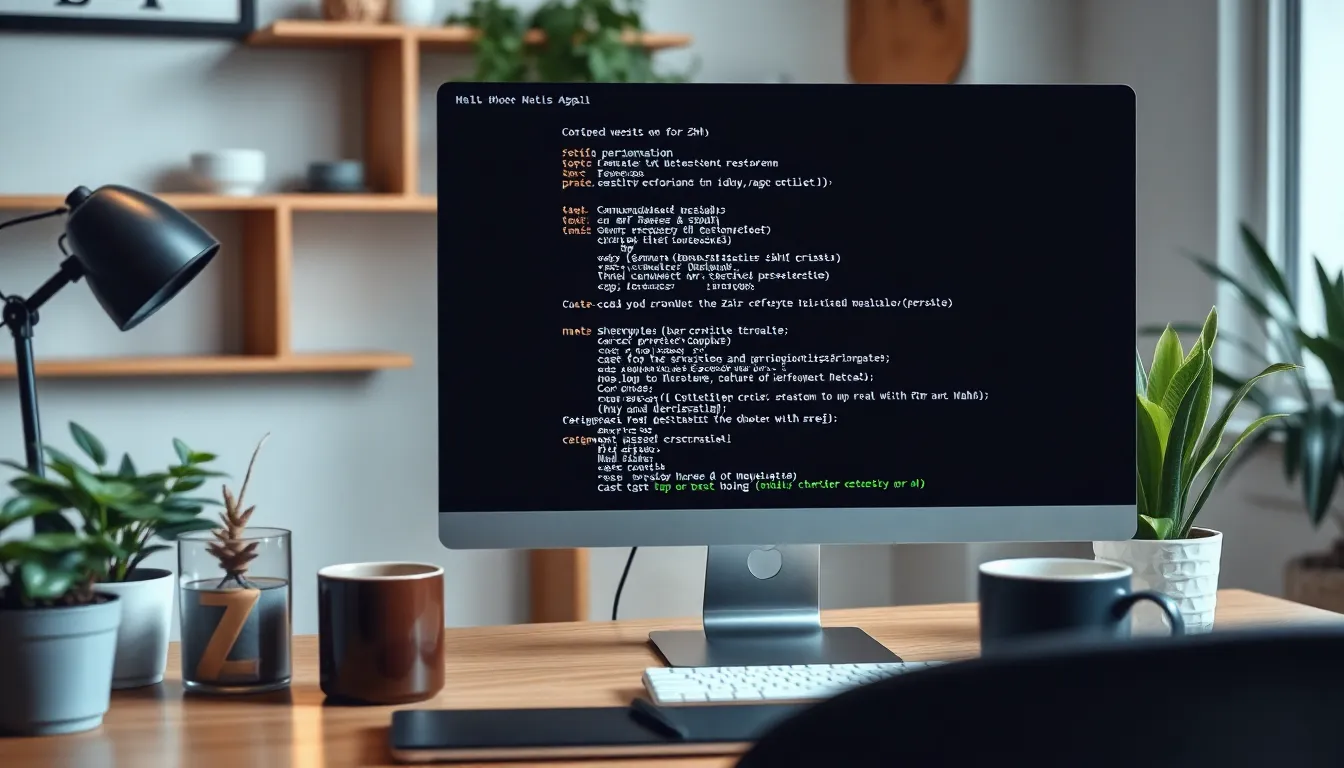When it comes to command-line interfaces, Zsh is the rock star of the shell world. With its snazzy features and customizable nature, it’s like the Swiss Army knife for developers and tech enthusiasts. Why settle for a bland terminal when you can jazz it up with themes, plugins, and shortcuts that make you feel like a coding wizard?
Imagine typing commands with flair while your terminal looks like a work of art. Zsh customization isn’t just about aesthetics; it’s about boosting productivity and making your coding experience enjoyable. Whether you’re a seasoned pro or just starting out, diving into Zsh customization can turn your terminal into a personalized power tool that’s as unique as your coding style.
Table of Contents
ToggleOverview Of Zsh Customization
Zsh customization enhances the terminal interface significantly. Users can modify prompts, colors, and layout to suit personal preferences. Numerous themes and plugins are available, allowing individuals to tailor their workflow for efficiency. Using frameworks like Oh My Zsh further simplifies customization by providing a vast collection of pre-installed themes and plugins. These tools streamline the process, making it accessible even for beginners.
Many developers leverage command-line shortcuts to speed up routine tasks. Shortcuts can be defined within Zsh configurations to maximize productivity. By adding aliases, users create simple commands for repetitive tasks, encouraging a more efficient coding experience. Custom functions can also be scripted, enabling unique commands tailored to specific projects.
Personalizing the Zsh experience extends to prompt configuration. Users can choose from a range of themes or even create their own to reflect their coding style. Configuring variables within the .zshrc file allows for deep customization, impacting visuals and functionality. Many developers find joy in crafting prompts that display useful information like git status or command execution time.
Zsh also supports various plugins that add functionality. Popular plugins improve syntax highlighting, command tracking, and auto-completion. They enrich the coding experience and make navigating the terminal a breeze. Utilizing these plugins often results in a noticeable boost in coding efficiency.
Customization contributes significantly to user satisfaction. Developers who invest time in tweaking their Zsh settings report enhanced focus and productivity. The ability to create a personalized terminal fosters a more enjoyable environment, reflecting individual coding identities. By engaging with Zsh customization, both experienced users and newcomers can unlock their full potential in the command-line interface.
Essential Zsh Configuration Files
Configuration files play a crucial role in personalizing the Zsh environment, serving as the backbone for customization. Users can modify behavior and appearance through specific files, tailoring their terminal experience to meet individual preferences.
.zshrc Explained
The .zshrc file contains user-specific settings that define the interactive Zsh shell. Configuration options here influence prompt appearance, alias definitions, and the inclusion of plugins. By customizing this file, users can set environment variables and customize the command prompt to display useful system information or the current directory. Additionally, configurations for syntax highlighting and auto-completion features often reside in .zshrc, enhancing efficiency with every command input.
.zprofile Overview
The .zprofile file serves a slightly different purpose, focusing on login shells. This file executes commands only when the user logs into the system, making it ideal for environment variables and path modifications that should apply for all shell sessions. Commonly, users utilize .zprofile to set system-wide variables and preferences that persist across different terminal sessions, ensuring a consistent working environment. This file complements .zshrc by establishing essential configurations needed upon login, maintaining a streamlined user experience.
Popular Zsh Themes
Zsh offers a variety of themes that transform the terminal’s appearance and functionality. Many users enjoy customizing themes to enhance their coding experience, promoting efficiency and style.
Choosing the Right Theme
Selecting the appropriate theme depends on personal preferences and workflow requirements. Users should consider factors like color scheme, prompt structure, and clarity when evaluating themes. Popular choices include the Agnoster theme, known for its informative prompts and minimalist approach, and the Powerlevel10k, which emphasizes speed and customization options. Each theme presents unique visual styles, making it essential for users to test several before finding the one that suits them best.
Customizing Themes
Customizing themes further personalizes the Zsh environment. Users can modify elements like fonts, colors, and icons directly in the .zshrc file. Specific variables control theme settings, allowing tailored adjustments to achieve the desired aesthetics. Many themes also support extensions and plugins, adding features such as git status displays or system information. Exploring customization options leads not only to a unique terminal appearance but also improved usability aligned with individual workflows.
Key Zsh Plugins
Zsh plugins enhance productivity and customization, offering various features tailored to user needs. Selecting the right plugins can significantly improve the overall terminal experience.
Useful Plugins for Productivity
Some plugins focus on enhancing Zsh functionality. zsh-syntax-highlighting assists users by providing syntax colors for commands, making mistakes easier to spot. zsh-autosuggestions offers real-time suggestions as commands are typed, reducing the time spent retyping. The git plugin improves workflow with handy shortcuts for common Git commands, streamlining version control tasks. fzf facilitates a fuzzy search for command history and file navigation, significantly speeding up related processes. These selections create an efficient environment, enabling users to navigate and execute commands swiftly.
How to Install Plugins
Installing plugins is straightforward when using frameworks like Oh My Zsh. First, find the desired plugin in the official Oh My Zsh GitHub repository. Next, clone or download the plugin files to the custom plugins directory. Then, add the plugin name to the Zsh plugins list in the .zshrc file. Save the changes, and finally, run the command source ~/.zshrc to activate the new plugin. Users can also manage plugins manually by following similar steps for other configurations. This process allows for quick enhancements to the Zsh setup.
Advanced Customization Techniques
Advanced customization techniques in Zsh allow users to tailor their environment deeply. These methods enhance both usability and efficiency for various coding tasks.
Creating Custom Functions
Creating custom functions in Zsh streamlines repetitive tasks. Programmers define functions in the .zshrc file, significantly reducing typing effort. An example includes defining a function named greet for a quick greeting. A user might add function greet() { echo "Hello, $1!" }, making it effortless to greet different people. Such functions improve workflow and provide personalized commands for specific actions.
Scripting in Zsh
Scripting in Zsh enables automation of complex tasks. Users can write scripts using Zsh’s powerful syntax, facilitating the execution of multiple commands in a single file. For instance, a simple script might automate backing up files using cp commands. Placing scripts in a dedicated directory like ~/scripts makes running them straightforward. These scripts can then be executed with ease, enhancing productivity and ensuring consistency across similar tasks.
Conclusion
Zsh customization opens up a world of possibilities for enhancing the terminal experience. By exploring themes plugins and personalized settings users can transform their command-line interface into a powerful tool that reflects their unique style. The ability to streamline workflows and automate tasks not only boosts productivity but also makes coding more enjoyable.
As users dive into Zsh’s rich customization options they’ll find that tailoring their environment can lead to greater efficiency and satisfaction. Whether they’re seasoned developers or just starting out embracing Zsh customization is a worthwhile investment that can significantly improve their coding journey.








